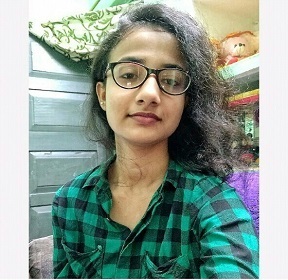Speakers
Amrik Basran
Avacta Lifesciences. United Kingdom.Title: TMAC™: A novel Affimer® drug conjugate platform to modulate the TME
Abstract:
The Affimer platform is an antibody mimetic scaffold based on the human protease inhibitor, Stefin A and we have generated a range of antagonists against several key checkpoints such PD-L1. With our anti-PDL1 Affimer Fc we have demonstrated total tumour regression in mouse syngeneic models in combination with Talabostat and immunity to rechallenge with tumour cells, showing that we have achieved an immune memory response. Conjugating Talabostat to an Affimer antagonist using a novel FAP-alpha cleavable linker (TMAC™), we have demonstrated tolerability and efficacy in mouse syngeneic models.
Biography:
Amrik has a PhD in biochemistry/protein engineering from the University of Leicester after which he spent 6 years at the Institute of Biotechnology, Cambridge University investigating bacterial pathways involved with the metabolism of illicit drugs and high explosives. In 2002, Amrik joined Domantis Ltd developing domain antibodies (dAbs). Following the acquisition of Domantis by GSK, he became Head of Topical Delivery (Biopharm Discovery Unit), supporting the development of biotherapeutics for delivery into the eye, skin and lung. In 2013 he joined Avacta as Chief Scientific Officer to develop the Affimer platform for therapeutic use.
Madhu Gupta
Delhi Pharmaceutical Sciences & Research University. IndiaTitle: Biopolymers and treatment strategies for wound healing: An insight view.
Abstract:
Chronic, non-healing diabetic wounds put a massive economic burden on health services causing patient incompliance and discomfort. Thorough interpreting of chronic wound pathophysiology led to the fabrication of targeted systems of drug delivery that can improve and accelerate the wound healing process. Natural polymers or biopolymers are now explored for the fabrication of wound dressings. Hence, in this review article, the pathophysiological aspects of chronic wounds, current treatment approaches, and potential biomaterials employed for treating wounds are explicated. The main emphasis is on biopolymers which aid in creating innovative systems based on nanotechnology for effective skin generation in chronic wounds.
Biography:
Madhu Gupta is working as an Associate Professor in Delhi Pharmaceutical Science and Research University, New Delhi. She has research experience pertaining to drug delivery to nanoformulations for magical molecule delivery, bioligands for targeting of bioactives and drug moiety, biopolymers, cancer nanomedicine as well as topical delivery that is carried out at Department of Pharmaceutical Sciences, Dr. H.S. Gour Central University, Sagar. She has over 80 research publications to her credit published in journals of high scientific impact and contributed 30 chapters in various renowned books and to several international and national books. She has the recipient of Research Excellence of the Year 2020, Youth Education Icon of the Year 2018, Young Scientist Award, Best Administrative Service Award, IDMA-G.P. Nair award and Prof. C.S. Chauhan award. She has also filed the PCT patent for effective wound healing therapy. She has the awardees of various national and International conference in the form of best oral and poster presentation award. as APTI and other. She has also organized so many National and international Conferences
Alicia Wu Mingshu
Guangzhou Medical Cancer Centre ChinaTitle: New health care facility commissioning and readiness to go live
Abstract:
Healthcare commissioning process should be safety and quality-oriented activities which validate and document the performance of not only facility but system as well, during the process commissioning team will verify to see if the original or defined objective and criteria are met. Understand the content, definition of commissioning that will take place. Clearly describe the timeline activities of commissioning processes 3. Evaluate the readiness before opening especially need to undertake risk assessment and the identification of potential hazards and the required strategies to eliminate or protect against these hazards during commissioning. Ingrained safety culture in everything we do during commissioning is crucial, therefor after identifying a group of commissioning team members we aligned the definition of hospital commissioning which is facility commissioning and clinical operations commissioning. project projective and identified seven medical flows, we also use simulation for activation during commissioning processes. Input should be also provided from all vertical team like radiology, inpatient, general surgery ect. As well as horizontal team like pharmacy, patient access, finance ect. It is also important to deliberately test emergency response at the same time, in our case, there are 5 major risks are identified and emergency response are also planned and tested making sure contingency plans are in place in case of potential disruptions. The goal is to make sure staff are really focus on safety and keep that mindset throughout the code response process. Commissioning checklist is a useful tool to be put into use throughout the whole processes making sure all aspects are covered, we also developed a simulation evaluation tool to identify gaps and potential improve opportunities. After diagnosing the problems and creating solutions we simulate the suggested solutions as well to choose the most effective and efficient solution which is used to create relevant policies and procedures that reflect the changes we made.
Biography:
Wu Mingshu who works as quality & safety and patient experience director in a private cancer hospital in Guangzhou China. She has rich experience in greenfield hospital setting ups and quality & safety management. She successful led JCI & TUV accreditation for a high-end private women & children’s hospital in 2017
Kunchala Gopi Krishna
Greenwich university IndiaTitle: Computer aided drug design (CADD)
Abstract:
The demand for new drugs is accelerated as a surge in novel diseases and infections. The traditional process of drug discovery and development is an expensive process in terms of money, time and manpower. It takes an average of 10 to 15 years with an appropriate cost of 800 million US dollar. This process can be accelerated with development of various computational tools and methods. Computer aided drug design (CADD) is a powerful technique due to its use in different stages of drug discovery. The most commonly and widely used approaches are Structure based drug design and Ligand based drug design. Structure and ligand-based approaches are in principle analogous to high-throughput screening in that both target and ligand structure information is imperative These approaches involve molecular docking, pharmacophore, and ligand design methods. structure-based and ligand-based drug design suggest that their complementary use, and their integration with experimental methods, has a strong impact on rational designing of a drug.
Biography:
Kunchala Gopi Krishna is from Greenwich University. purusing pharmaceutical student and he has handful of Knowledge on Analytical equipment like HPLC, GC, and UV. Meticulous Approach to work, Good communication skills and Teamwork are my strengths
Niaj Morshed
khwaja yunus ali university BangladeshTitle: Phytochemical and pharmacological screening of leaves of barleria lupulina and ADME/T properties analysis of its isolated compounds.
Abstract:
The present study was undertaken to demonstrate potential ADME/T properties analysis and to evaluate antioxidant, anthelmintic and membrane stabilizing activities of the ethanol extract of Barleria lupulina leaves in different experimental models established in vitro. The dried leaves of B. lupulina were subjected to extraction using ethanol. Phytochemical screening was carried out using different chemical group tests. ADME/T Properties analysis test was carried out using Swiss ADME and online based tools respectively on nineteen isolated compounds. To investigate antioxidant property, three potential tests namely DPPH free radical scavenging study, Total Phenolic Content which was analyzed by the Folin-Ciocalteu’s colorimetric method using Gallic acid as standard and Total Flavonoid Content by using Quercetin as a standard. The Anthelmintic test was conducted on parasite Paramphistomum using four different concentrations (25, 50, 100, 200 mg/ml) of the extract and albendazole as standard drug (concentration 15mg/ml). To estimate the membrane stabilizing activity, both heat and unheat solution induced haemolysis techniques were used and Diclofenac sodium also used as standard drug.Phytochemical group tests indicate the presence of flavonoids, tannins, glycoside, steroids, carbohydrate and quinone. In ADME/T properties analysis, potential drug candidates were identified from the isolated compounds of Barleria lupulina. This plant has 19 compounds which accomplish Lipinski’s rule of five. In the quantitative assay, the extract showed antioxidant activity in DPPH free radical scavenging assay, the IC50 value was found to be 98.93μg/ml, Total Phenolic Content (TPC) indicated that 1mg of leaf extract contains 153.32 μg with GAE and also Total Flavonoid Content (TFC) was found to be 32.26μg with quercetin equivalence. The ethanolic extract showed potent anthelmintic activity at the highest concentration as it required less time for paralysis and death compared to the standard drug albendazole. The extract exhibited good membrane stabilizing activity inhibiting both heat and unheat solutions in comparison to inhibition by standard diclofenac sodium.The results presented that the ethanol extract of the plant has potential antioxidant, anthelmintic and membrane stabilizing activity based up on the experimental conditions tested. This study also expressed that the plant contains some potential chemical compounds which satisfy Lipinski’s rule of five (RO5) and might act as potential drug candidates.
Biography:
Niaj Morshed is from khwaja yunus ali university at Bangladesh. His research interest is phytochemical and pharmacological screening of leaves of barleria lupulina and adme/t properties analysis of its isolated compounds.
Rajnandini Bhadra
Attended Amity University IndiaTitle: Drug Discovery
Abstract:
Drug discovery is a method which aims at identifying a therapeutically essential compound or chemical, in curing and treating of diseases. In the earlier periods, this concept focused on identifying the main ingredient from the traditional remedies. But, in the modern drug discovery involves the identification of screening hits, medicinal chemistry and optimization of those hits to increase the affinity, selectivity (to reduce the potential of side effects), efficacy/potency, metabolic stability (to increase the half-life), and oral bioavailability. A “target” is a molecular structure on which the drug that has been discovered is made to act. Proteins such as G-protein coupled receptors (GPCRs) and Protein Kinases are some of the protein targets in drug discovery. Many drugs and chemicals with biological activity have come into light and these natural products can be a source of novel chemical structures for modern techniques. Plant derived metabolites have the potency for medicinal properties due to the plant derived proteins in acting as receptors, enzymes, etc. Jasmonic acid/ jasmonates, Salicylic acids/salicylates are some of the plant derived compounds can be used as an application in the field of therapeutic purposes and hence drug discovery. Jasmonates induce programmed cell death of cells and protein cascades in response to various biotic and abiotic stresssors. Jamonate derivatives (JAD) have important would healing, tissue repairing and regeneration properties. It is hypothesized that JAD interact with proteoglycans and GAG polysaccharides which are vital ECM components. Salicylc acid is a phytohormone that serves as the major player in plant immunity. These compounds have active roles in pain and fever management, cell proliferation suppression. They can also induce apoptosis in lymphoblastic leukemia. Clinical plant based studies have made progresses in the field of anticancer and antimalarial compounds. Taxoids, camptothecins, astesemisinin compounds are derived from plants that are used in anticancer and antimalarial treatments. Paclitaxel, isolated from Taxus brevifolia is the most recent example which being derived from plants has been prominent in therapeutic usages. Hypercin and pseudohypercin are two compounds derived from Hypericum perforatum that can act against the various retroviruses, including HIV. Research in the field f drug discovery requires the usage of GCMS, NMR, IR, HPLC, HPTLC etc, so that the targeted molecules can be screened and identified through their structure, precisely. Employing these technologies will give us innumerable opportunity to screen different therapeutic molecules and develop softwares and databases to establish natural drugs and finally lead to drug discovery.
Biography:
Rajnandini Bhadra is from SRMIST India. Her research goal are directed towards the development and utilisation of plants and microbes in the developing a sustainable planet. My current research articles includesusage of microbes in biodegradation of plastics in the marine environment, phytoproteins in suppression of breast cancer metastasis, green synthesis of nanoparticles.







